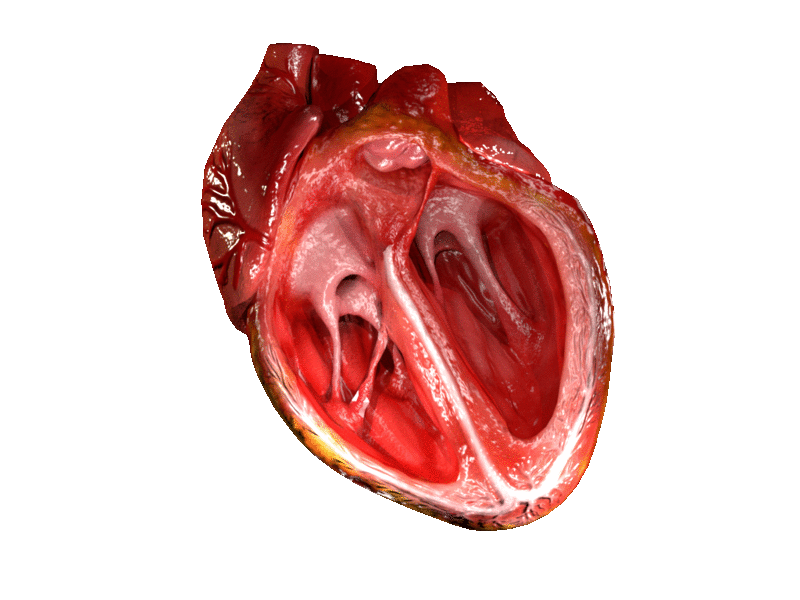MYOCARDIAL INFARCTION (Heart Attack) | Definition | Epidemiology | Management | Part 1
To most people, the word cardiac implies a person with a sick or damaged heart. In the popular view, a cardiac patient is thought as someone who is severely limited, slow moving, sickly, a person whose future is uncertain. This description may apply to some heart patient certainly not to majority. Even patients with severe disease can often be taught to live vigorous and productive lives. Although, heart diseases have been since ancient times, it is often refereed to as the twentieth century epidermic.

Cardiac patients are not dying people as the Society perceives
Myocardial infarction is the death of a section of the heart muscles caused as a result of ischemia (in adequate blood supply to the heart muscles). It is usually characterized by sever chest pain.
The heart and how it works

The heart is found in the chest/ thoracic cavity
Although the heart rest only for a fraction between beats, but it is designed to last a lifetime. Even in the presence of diseases, the heart can continue to pump enough blood to sustain life, though activities may be restricted. Until few years ago, most people regarded heart disease as either a part of aging process, the result of rheumatic fever, or part of our genetic makeup; in other words, inevitable events over which we have little control.
But due to a number of large scales studies that deduce the fact that cardiovascular disorders are not inevitable consequences of aging or heredity. Instead, they are related to the way we live: What we eat, smoke and drink, how we walk and play; how we cope with stress and how we manage high blood pressure, diabetes, obesity and other health problems. In short it has been of recent that we have come to realize that many heart attacks can be prevented or delayed by changing our lifestyle.
Assessing risks of heart attack

You are more likely to develop heart diseases and even diabetes when you are inactive
It is important to note and understand that no one can predict with certainty who is going to have a heart attack. Some people seem to violate all the rules - they smoke, eat all wrong food, never exercise, subject themselves to intolerable stress, ignore their doctor's warning about high blood pressure and still, they live to a right old age without even experiencing a twinge of chest pain. And there are those who seem to do all the right things and still are stricken with heart attack at an early age. We can not say why this happens, they are still many unknowns about heart diseases but research is constantly providing new insights and elucidating these unknowns.
Role of Epidemiology
Epidemiology, a branch of medicine that studies the disease pattern in large population groups has also helped in the elucidation of the causes of heart disorders. Although it has been known that some population groups have a very high incidence of certain heart diseases while others seem to be virtually immune. Similarly, heart attacks and coronary heart diseases are most common in industrialized countries and relatively rear in non-industrialized countries.
A number of large scale epidemiological studies have been conducted and a number of consistent patterns have emerge from these experiments that has enables scientist to identify several major cardiovascular risk factors. These factors are:
Controllable Risk Factors
- High blood cholesterol
- High blood pressure
- Cigarette smoking
- Environmental stress
- Diabetes
- ObesityUncontrollable Factors
- Age (the risk goes up with increase in age)
- Sex (Men are at higher risk than menopausal women)
- Heredity (Family history of heart attack increases risks)
Conclusion
When talking about Heart attack or any other cardiovascular disease, we cannot predict who will or will not be a victim on the basis of risk factors alone. it is the best to reduce or control as many of them as possible to improve our chances of avoiding a heart attack. Although there are treatments,therapy, or surgery, diet and exercise routine; but no matter what the problem or therapy, the most important member of the treatment team is YOU (the patient). and the more you know about your heart and how to take care of it the better. This doesn't mean you should be your own doctor, but it does mean you can be your doctors partner.
References:
- https://en.wikipedia.org/wiki/Myocardial_infarction
- http://emedicine.medscape.com/article/155919-overview
- https://www.ncbi.nlm.nih.gov/books/NBK45688/




Being A SteemStem Member
Very informative for me as a student especialy the factors in which we can prevent ourselves from doing . Will look forward to part 2